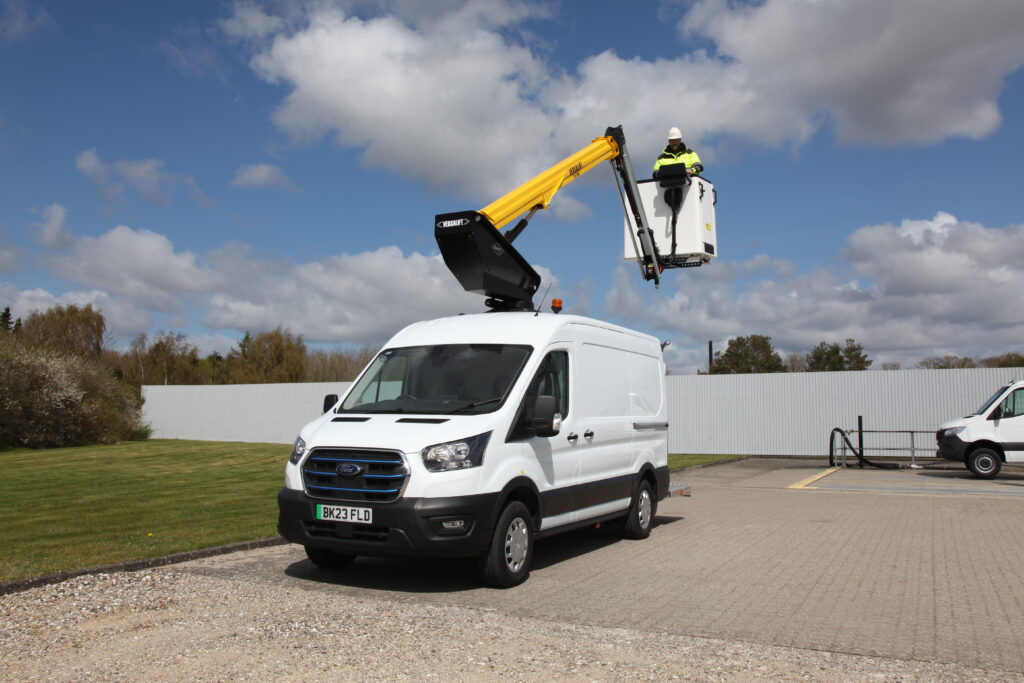Understanding Payload Capacity in Access Platforms: Ensuring Safety and Productivity
As manufacturers of cutting-edge access platforms, commonly known as cherry pickers, we recognise the pivotal role these machines play in transforming how tasks at height are approached.
Our commitment to providing safe and efficient solutions prompts us to delve into the importance of understanding the payload capacity of your access platform.
In this blog, we will explore why knowing this information is crucial for both safety and productivity. From defining payload capacity to addressing the consequences of overloading, we aim to empower users with the knowledge needed to make informed decisions and maximise the performance of our access platforms.

White van with cherry picker yellow boom all electric versalift van mounted access platform
What is Payload Capacity on My Vehicle?
Payload capacity refers to the maximum weight that an access platform, such as a cherry picker, can safely carry while in operation. This weight includes not only the operator but also any tools, equipment, or materials being transported on the platform.
Knowing the payload capacity is essential for making informed decisions about the type and amount of equipment and materials that can be safely used on the access platform. Manufacturers provide this information in the equipment’s specifications to guide users in adhering to safety standards and preventing overloading.
Why is it Important to Know the Payload on my Vehicle?
Understanding the payload capacity is a fundamental aspect of using access platforms safely and efficiently. Several reasons highlight its importance:
a. Safety Concerns:
Exceeding the specified payload capacity can compromise the stability and structural integrity of your vehicle. This increases the risk of accidents, such as tipping over, and increases braking distances which can result in serious injuries or fatalities.
b. Equipment Longevity:
Overloading puts excessive strain on the mechanical components of your vehicle, leading to premature wear and tear. By staying within the recommended payload limits, you contribute to the longevity and proper functioning of the equipment.
c. Legal Compliance:
Adhering to the payload capacity guidelines ensures compliance with safety regulations and standards. Violating these regulations may lead to legal consequences, fines, and a jeopardised reputation for your business.
What Happens If I Overload?
Overloading an access platform can have severe consequences, both for the equipment and the individuals operating it:
a. Risk of Tipping:
Exceeding the payload capacity increases the likelihood of the access platform tipping over, especially when extended to reach higher elevations. This poses a significant risk to the operator and those in the vicinity.
b. Structural Damage:
Overloading can lead to structural damage to the access platform, affecting its overall integrity. This damage may not be immediately apparent but can compromise the machine’s safety in future operations.
c. Mechanical Failures:
Excessive weight can strain the hydraulic systems, motors, and other crucial components of the cherry picker, resulting in mechanical failures. This not only endangers the operator but also disrupts work schedules and may incur costly repairs.
How Does Knowing Payload Capacity Keep Me Safe and Productive?
Understanding and adhering to the payload capacity of your access platform contribute significantly to a safer and more productive work environment:
a. Operator Safety:
By staying within the specified payload limits, operators reduce the risk of accidents, ensuring their own safety and the safety of those working nearby.
b. Enhanced Stability:
Adhering to payload guidelines maintains the stability of the access platform, particularly when extended. This stability is crucial for performing tasks at height with precision and confidence.
c. Optimised Performance:
Operating within the recommended payload capacity ensures that the access platform performs optimally. This allows for efficient completion of tasks without unnecessary wear and tear on the equipment.
In conclusion, understanding the payload capacity of your access platform cherry picker is not just a matter of compliance; it is a key factor in ensuring the safety of operators and bystanders. Adhering to these limits not only prevents accidents and equipment damage but also contributes to a more productive and efficient work environment. Prioritising safety through knowledge and practice is the cornerstone of successful operations with access platforms.

